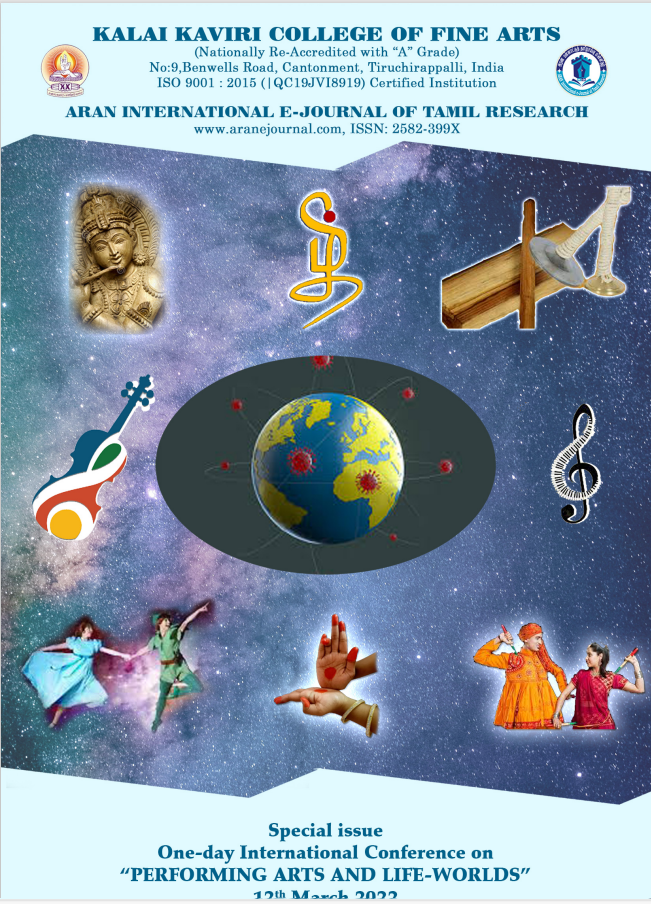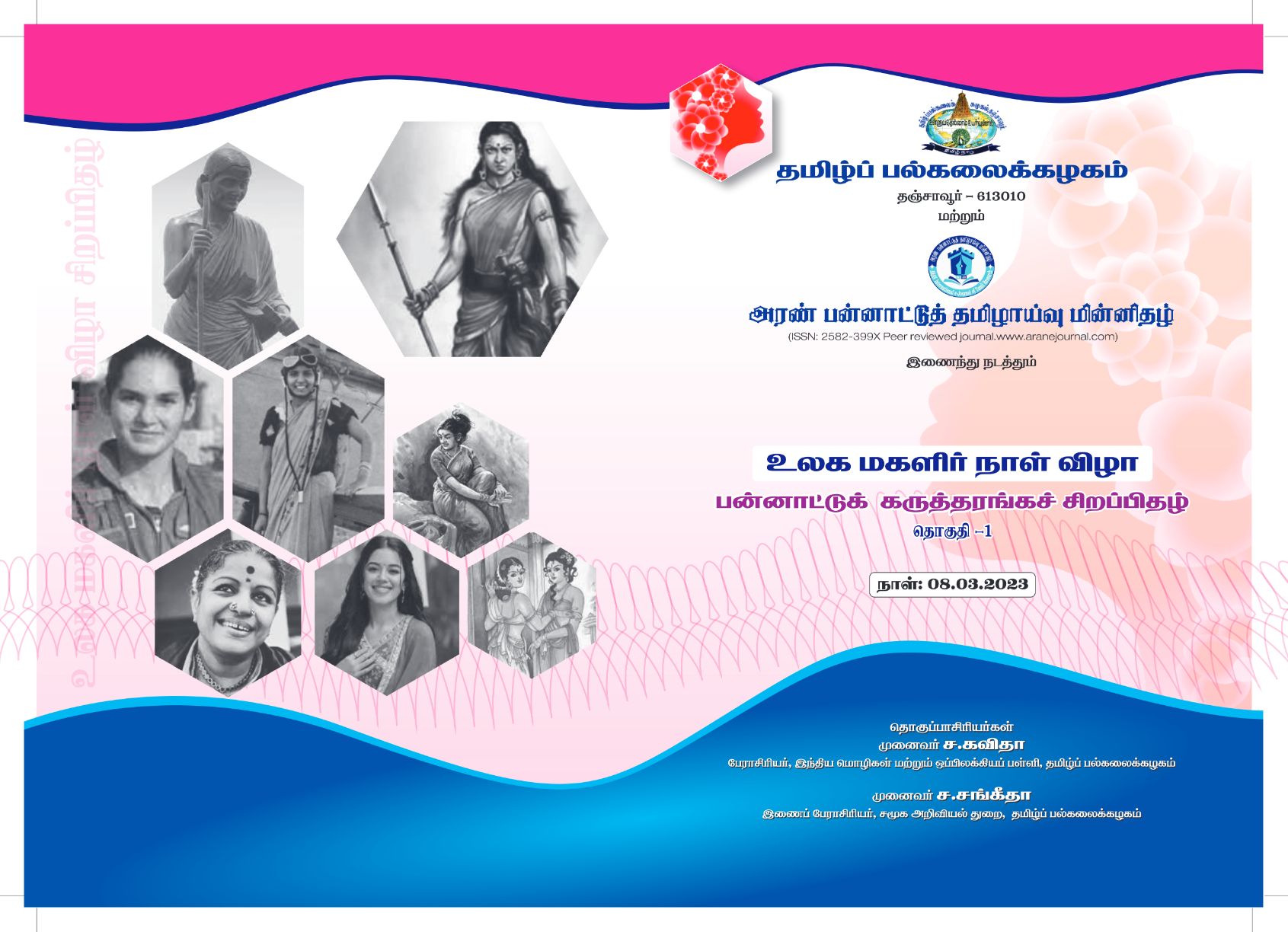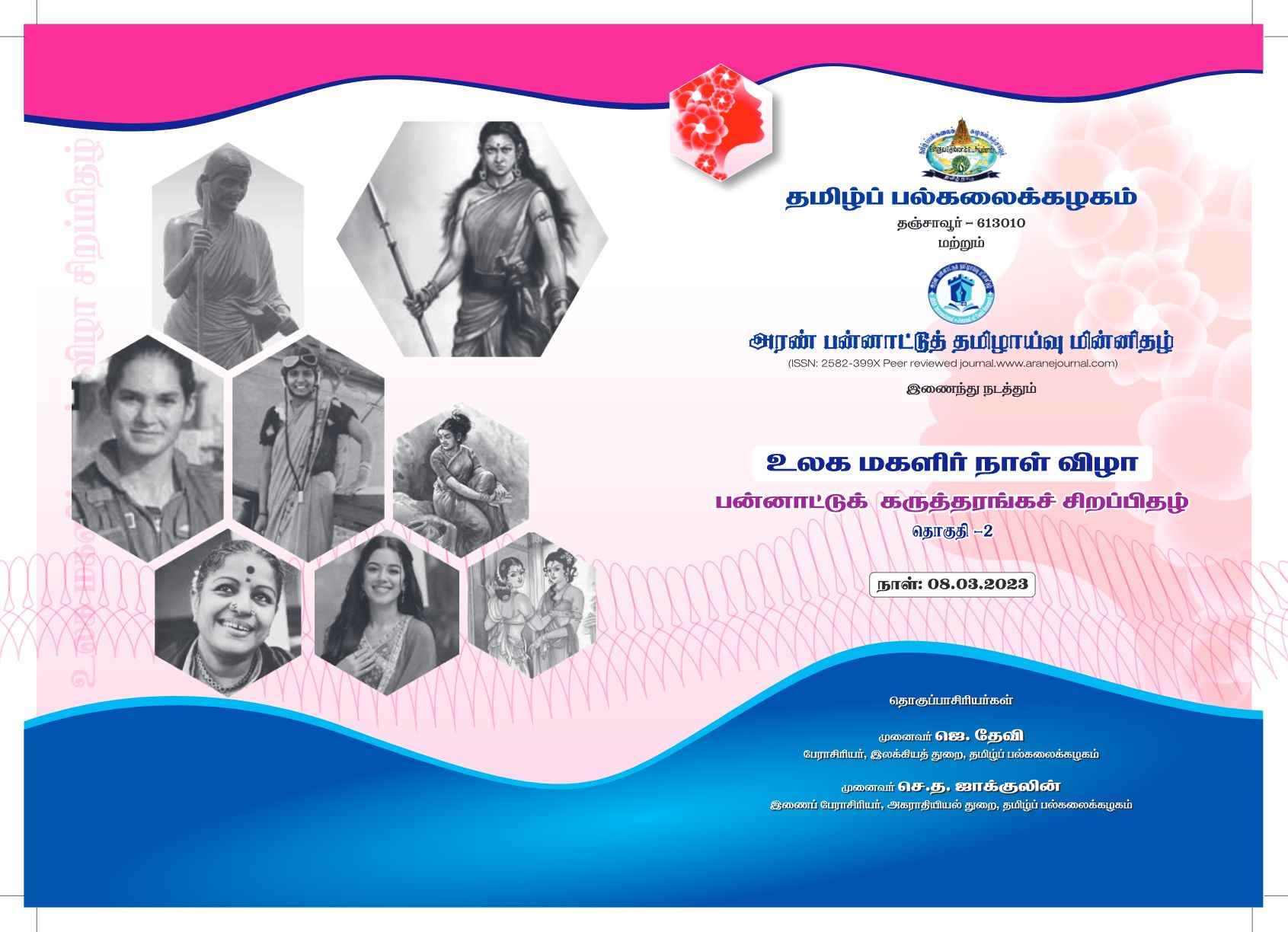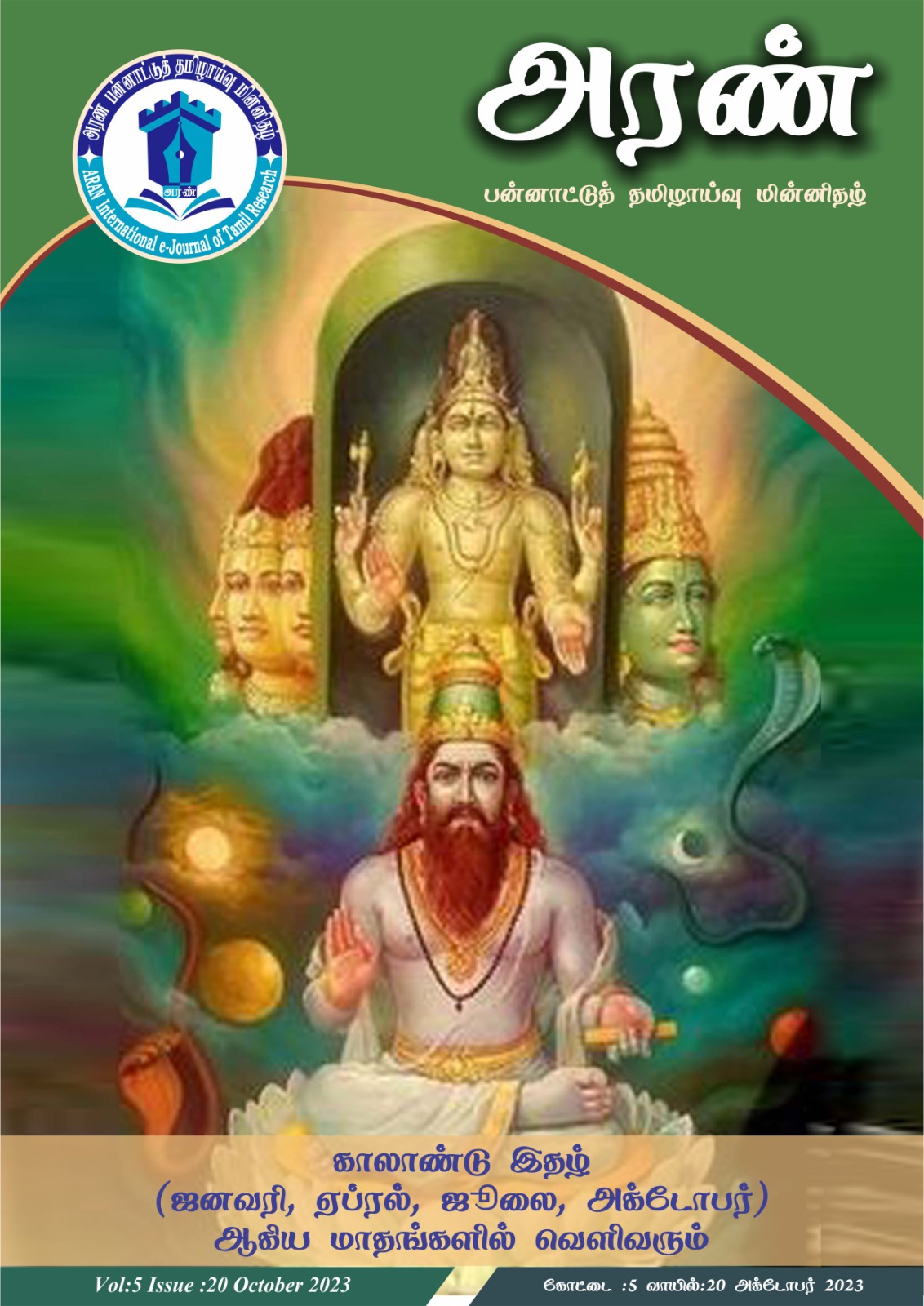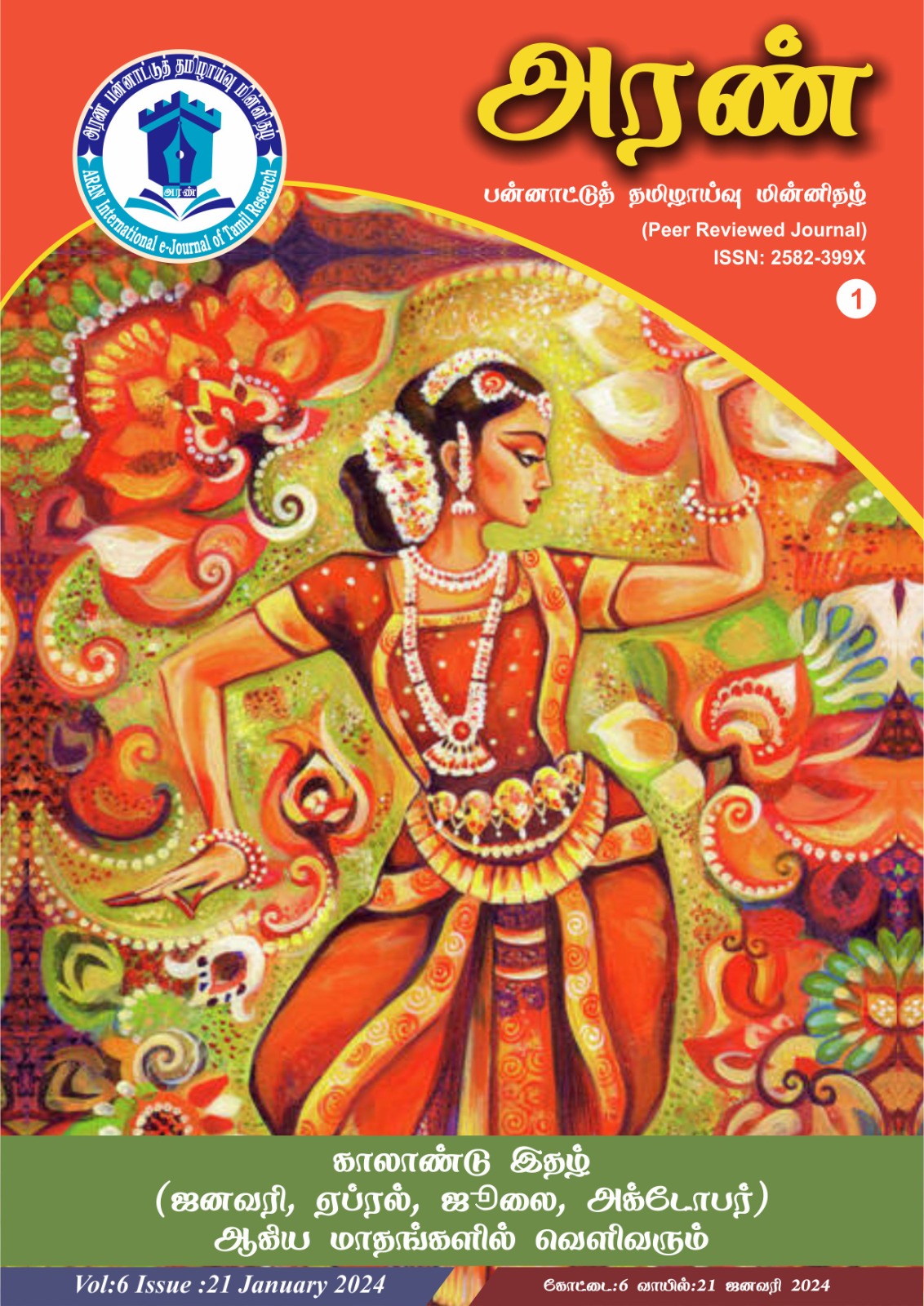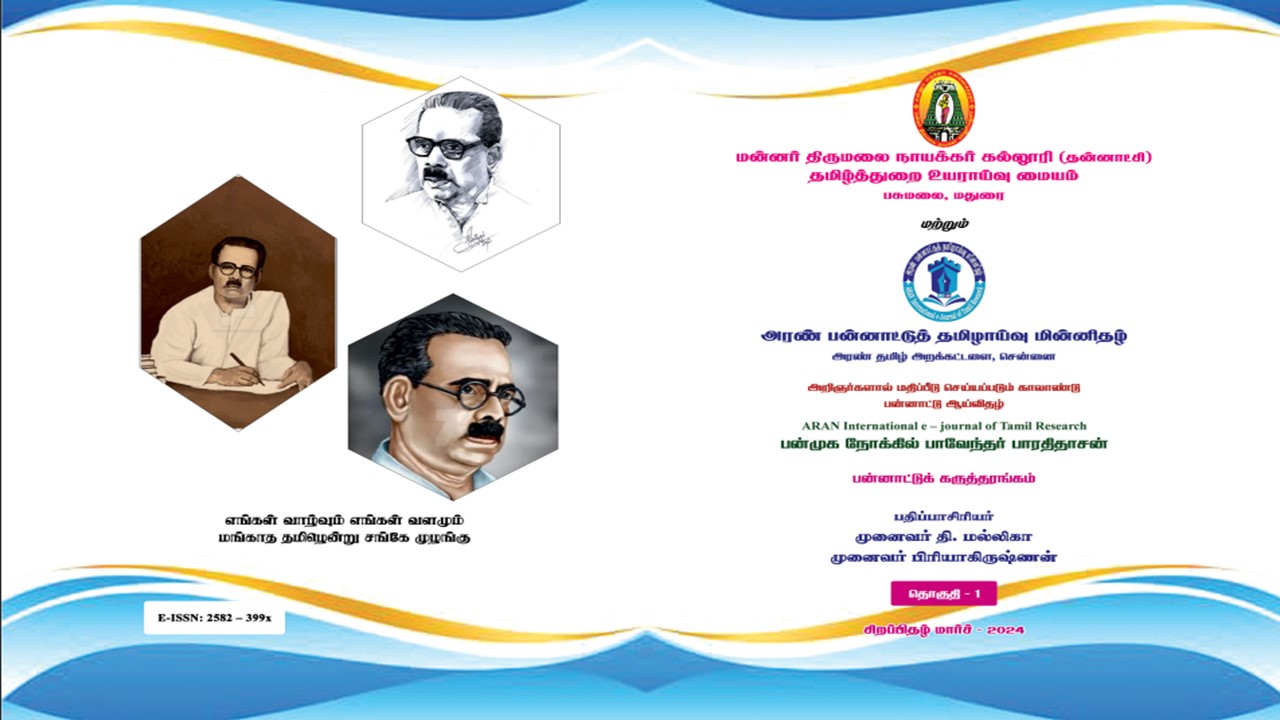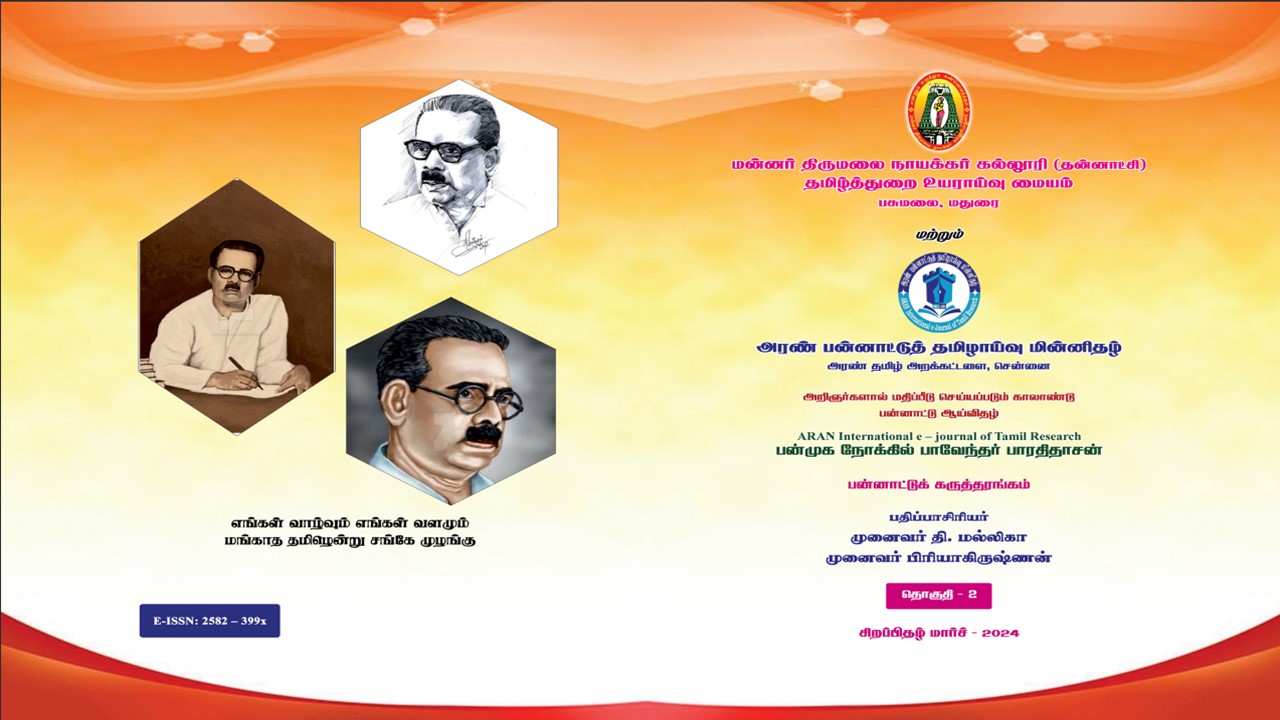A study on preliminary correspondence between Indus Scripts, Tamil, Gondi and Sumerian languages
Abstract:
M C Kangali has deciphered Indus Scripts through Gondi. Mathivanan has deciphered Indus Scripts through Tamil. Gondi and Tamil are Dravidian languages and a preliminary comparison is made between these two authors with respect to Tamil alphabets as proposed by Mathivanan. This comparison is limited to few sample words in Gondi and Tamil, further extended to Sumerian Tamil words. This study gives a preliminary idea of some correspondence as between these languages. Say, a single word of interest common to all three languages Tamil, Gondi and Sumerian is, “aayaa”. We could tell that early Sumerians spoke Tamil only after studying theirs’ education and training system. We require to find out the education system of Indus people. Such studies together with archaeological findings may open the doors to solve the Indus Scripts puzzle enabling reading them through Dravidian languages.
Keywords:
Languages, Tamil, Gondi, Sumerian, Indus Scripts, Decipherment, Education System, Teaching.
Introduction:
Decipherment of Indus Scripts in Gondi by M C KANGALI (1) is important as the author had worked through ancient similar looking Gondi scripts, culture and so on, which we can not ignore or neglect, although many have attempted on decipherment in the past. This also gives us opportunity to directly relate Gondi words and Tamil words, as both are Dravidian languages. Further, as we compare this with Sumerian methods, our work or our understanding (2,3,6) and with Prof. R Mathivanan (4) on Second Sangam – Sinduveli ezhuththu padippathu eppadi, we get more insights. Not much reference is made to other works, except the general understanding that Indus people spoke Dravidian language and Gondi and Tamil are Dravidian languages. Parpola (5) recommends that common Tamil speaking people could look into the Indus scripts for new ideas and as Tamil language remains as least affected retaining it’s original form. So also we could consider our work stating that early Sumerian spoke Tamil (2,3,6) and as such Sumerian and Indus, thus relating to Dravidian languages of same period, make us to think on certain new possibilities on decipherment. Thus, these comparisons could be expected to give us some more insights and direction for future research.
Basic Indus Scripts – Samples
M C Kangali (MCK) retrieved by assigning Gondi words to Indus Scripts, which are mostly, directly relatable to Tamil words ( Table-1). MCK provides for each selected signs the identification by appearance, Gondi cultural relations, phonetic values and meanings. Mostly the signs appear as words rather than root syllables in contrast to Sumerian, where we could identify from root syllables, their meanings and as seen both in pronunciation and meaning (2,3,6). Sumerian used mixed systems of syllables and words in full while constructing sentences (2,3,6); say, “dub” for tablet is base syllable as in Tamil “tuppu” and “gir-ge-na” for library is constructed word as “kirukkina” in Tamil meaning what that is scribbled. In Indus Scripts as we go through MCK decipherment, we see mostly words and joining of words very similar to Tamil(1) and he reads the seals from right to left. But, Mathivanan (4) uses alphabets relating to each Indus sign and reads the seals from left to right. It is possible that MCK work relates to much earlier period or the beginning of Indus writing system using pictograms to express than latter period on syllabic or alphabetical writing systems. We (2,3,6) wondered how the primary education methods would have evolved as writing systems evolved, particularly considering these two teaching methods still we use: A for Apple and telling stories just be seeing pictures (without written words). It will be interesting to find out the education systems in the past, as we get more archaeological evidence.
Table-1 shows three basic Indus signs ( refer to Plate-1, section-3 for pictograms). This indicates the method MCK uses and how we could relate words from Gondi and Tamil languages. This shows the importance of looking at MCK's work requiring more depth while understanding the Indus Scripts through Gondi vis-à-vis Tamil.
Table-1 shows three basic Indus signs ( refer to Plate-1, section-3 for pictograms)
|
Sign reference |
Sign name |
Gondi words |
Hindi or other meaning |
Tamil words relating to Gondi |
Remarks |
|
MD-1931-483 |
मानव |
आल |
अथीपति राजा सत्ता |
ஆள் ராஜா அதிபதி Person, king, head |
கடவுள் ஆன் ஆண் ஆ அ அவன் God, he, a aa |
|
MD-1931-182 |
पीपल पत्र + मानव |
आय आर पेन आयाल |
माता शकित |
ஆயாள் பெண் சக்தி தாய் Grand mother lady Goddess mother |
கடவுள் அ ஆ ஆர் அவள் அரச God a ar she royal |
|
MD-1937-401 |
अर्थ पिपल पत्थर + मानव |
कूचायाल पेन |
छोटी माता शकित
|
குச்சோயாள் இளையாள் இளையத்தாய் Young lady, younger sister to mother |
அரை இலை இளைய இ ஈ Half leaf young e ee |
The three Indus signs ( Section-3 of Plate-1 and Table-1) are stick diagrams of human with body, hands and legs. The first sign is simple, the second one with a full leaf attached to the head, whereas, the third one is with half a leaf. The Gondi word pEn for god is taken as pen, denoting female in Tamil. Clearly the first sign is a male, the other two are female denoting signs. We also see combining of two words say the second sign as aay+ aal leading to the word aayaal, this word in Tamil means grand mother, in Gondi goddess and in Sumerian, goddess, particularly wife of Sun god. This may not be a coincidence while we consider our finding that early Sumerian spoke Tamil (2,3,6).
These three signs along with other simple signs in the Gondi book(1) give us directions as what would have happened in the past of such script development.
Indus Scripts and alphabets
Here, we attempt to examine Prof R Mathivanan (4) decipherment, particularly abstraction of root syllables or alphabets for Indus scripts through Tamil. This we attempt to compare with MCK decipherment (1) for typical scripts by taking Gondi terms and converting them to Tamil.
Refer to Table-2 and section 2 of Plate-1 which show Indus Scripts and abstraction or rebus of Tamil alphabets as taken by Mathivanan. In Table-2, particularly the first three columns, alphabets and Tamil words as given by Mathivanan are shown. The fourth column provides Tamil words as translated from Gondi corresponding to same Indus Scripts, meaning and words as deciphered by MCK. We have also provided sample words in Tamil as corresponding to Tamil alphabets in fifth column as read and taken from Sumerian dictionary, ePSD(8). These show various possibilities but prevalence of Tamil roots or words in distant past.
Table-2, Comparison of sample words in Gondi, Tamil, Sumerian Tamil with respect to Tamil alphabets.
|
1 Tamil Alphabet with basic vowels |
2 |
3 Prof Mathivanan (with reference to his decipherment, see plate-1) |
4 Dr. M C KANGALI ( this with reference to Indus signs, see plate-1, where possible to relate) |
5 ePSD & our own refer academia.org ( this with reference to root syllables phonemes) |
|
அ |
a |
மனிதன் man |
ஆள் அதிபதி ராஜா சத்தா person, head, king, Saththa |
அ அ-ஆ அய்ய அய்யா a, a-a, ayya as alphabet, cry, father |
|
இ |
e |
ஈ fly |
கீரா கத்தி knife |
இடு எடு இயம்பு e as go lift speak |
|
உ |
u |
உல்லரி tender plant shoot |
ஓமா நெல் வயல் கதிர் oma, paddy field |
உ உலகம் ஒருங்கே உம் u as oo, world, totality, and |
|
எ |
ae |
ஏற்றம் lift irrigation device |
ஏர் ஊர் நங்கூரம் plough village ship anchor |
என் ஏன் ஏந்தல் en as lord, enna as what |
|
ஒ |
o |
ஒலியல் peacock plumage |
கொடுக்கல் வாங்கல் தகவல் exchange information |
|
|
|
|
|
|
|
|
க |
ka |
கலயம் கை vessel hand |
அளவு ஆழம் ஆழாக்கு அள ஆள பாயல் measure, irrigate |
கா பேசு ka as mouth |
|
ங |
nga |
தாய் ங்க mother |
இரண்டு ஆழாக்கு measure பாயல் வீணை பாடல் பாணன் veena music singer |
சங்கு தலை சங்கம் sag, sa’ng as head, capital |
|
ச |
sa |
சேல் மீன் fish |
போய் போகி சிவன் சிவலிங்கம் மீன் முக்கிய தலா சேரா மூரா தலைபிரட்டை priest head fish frog stage-2 |
சமம் சீர் sa as equal sir as poem |
|
ஞ |
jna |
கோழி குஞ்சு chick |
|
|
|
ட |
|
சட்டம் square frame |
மந்திரம் சங்கம் மாந்தி வீட்டு வாசல் சதுக்கம் அரை அறை meeting place open space |
தட்டு da as tablet, written |
|
ண |
na |
நான் கால் I, leg |
ரண்டு இரு இருப்பிடம் கால் number two residence leg |
ஆண்டவன் ஆன் an as god |
|
த |
tha |
தண்ணீர் ஏரி மழைத்துளி water |
மூன்று முந்து முதல் பில் three go forward first வில் வில்தல் விற்றல் bow selling |
தட்டு da as tablet, written |
|
ந |
na |
நாகம் நாஞ்சில் நான்கு snake, plough, four |
நதி ஏர் யேர் ஏறுமுகம் ஆறு நீர் river water |
நாம் நம் நம்பிக்கை நான் நரன் nam as fate, na as man |
|
ப |
pa |
புழை குகை தழை படுக்கை cave bed |
வக்கேள் வைக்கோல் போர் வங்கு விடரகம் மாடி வீடு மேடு மேகம் ஆகாயம் விசாலம் வாசல் house mound hill large area அரச இலை ஆலி ஆரா ராஜா முக்கியன் ஆய ஆர். Peepal tree leaf, king, ar, aya |
படர் பண் pa as spread ba.an as singer |
|
ம |
ma |
மலை mountain |
மலை மேட்டா மேடு கிராமம் mountain village மூரி உறி சாமான் வைக்க தூக்கா தூக்கு பாரம் weight device to suspend food items |
கூர் மலை kur as mountain மா கப்பல் ma as ship |
|
ய |
ya |
யா மரம் tree |
தெற்கு திசை சீரேங்கா இலங்கை South |
|
|
ர |
ra |
வானியல் துடைப்பம் broom |
|
அரை அரா ra as half |
|
ல |
la |
செல் insect |
சூர் soor |
உலகம் u, la as world |
|
வ |
va |
வாய் mouth |
கைச்சி பாக்கு வெட்டி கோயா வம்சம் கத்திரிக்கோல் கைசீவல் Koya community scissors |
வான் ஆன் an as sky |
|
ழ |
zha |
கழுகு eagle |
மல் மயில் வான் கோழி கோர் கொக்ரக்கோ bird |
மெழுகா meluhha |
|
ள |
la |
உளியம் கரடி bear |
இரா ஈரா இறா இரவல் shrimp |
|
|
ற |
ra |
ஆறு river |
மர்க்கடம் மகன் son |
|
|
ன |
na |
தேன் honey |
கோந்தோளா கொந்தள தேசம் சமுதாயம் கமிலா கிராமம் Chalukiya Kingdom சூரியன் போது போத்து பொழுது அம்மாவாசை sun full moon மூரா மூராள் கரியாபில் கோரபில் நால்கோட் நாலு கோட்டை four forts |
ஆண்டவன் ஆன் an |
|
ஃ |
ahk |
|
|
அக் ஆக் a to ak, a'ak |
Let us refer to seetion-2&3 of Plate-1 and Table- 1&2, first sign, the stick diagram of a person, both MCK and Mathivanan refer this to human and Mathivanan assigns அ>a, whereas MCK comes with words ஆள், அதிபதி, இராஜா, சத்தா (Āḷ atipati irājā cattā) > person, head, king, Saththa. Though we could see both authors refer to person, MCK has not taken the root syllable as rebus but holds only as a person as we could identify it as it is even now. We could see such similarities between these two authors taking the meaning of the Indus scripts same but calling them by different names as above and further: In the case of u, as ullari(Tamil) and nel(Gondi) both referring to tender plant shoots; ng referring to mother but original picture decorated with plant leaf(page-30, 1) and aayal or matha by MCK. In many other places, both differ from each other, but these require further studies.
A resolution can be drawn as between these two authors, though they read the Indus scripts in opposite directions; Mathivanan (4) abstracting into alphabets, MCK keeping as words that is to say using Gondi culture and scripts and remaining in the form of words; this could be representing an antique or frozen nature of MCK decipherment in time than to Mathivanan’s method, indicating later developments. Interestingly both Gondi and Tamil being Dravidian languages and adding Sumerian, that as well as a Dravidian language, accepting one or the other, or combinations of decipherment of Indus scripts appear to be happening soon. The Sumerian literature show a combination method, whereas MCK mostly uses words and Mathivanan uses alphabets, a feasible solutions may be there in their combination and appropriateness in each seal occurrence, period, use, groups and so on, as we traverse from the past to present with few to many languages and population growth. It is also interesting that the Planck institute (Kolipakam et.al 7) studies predict some 5000 years from now as the period of existence of a common base language to the Dravidian languages.
Plate-1
Plate-1 Shows:
Section-1 seal 1546, page-100, Kangali (1).
Section-2 Tamil Alphabets and corresponding Indus signs as proposed by Mathivanan (4), only few sample signs are shown.
Section -3 Basic signs page-103, Kangali (1) as we have considered.
Further, a startling revelation could be an Indus poem as we see the seal - No. 1536, page 100 of M C Kangali, refer section-1 of Plate-1. This interestingly go well with the archaeological findings of water harvesting and drainage systems of the Indus people. If true, this also indicates an education system in Indus culture in transfer of knowledge. We have also taken liberty to deviate or add more to MCK observations and decipherment, as we see this as a poem, very similar to our primary education method of telling stories just by seeing pictures, read from right to left: The wind forming cyclone; brings water in covered drains; fills the ponds; ladies; walk; with pots; what a natural scenery, it is god's grace. Note, how the scripts, Gondi and Tamil words are related: the cross depicting cross winds>> maattaya>>maththu, a tool used in churning curd for butter; the cover and arrow depicting covered drain>>kaalvaal>>kaalvaai, the drain; the U with central mark as the ponds getting filled >> aandi, aalaa with rim >>pallam, andaa, large vessels or low lying places; the bangles depicting the ladies >>akkaa>>akkaamaar, the ladies who wear bangles; two lines depicting legs or walking>> iru, kaal>> kaal nadai, as pedestrian; the U, the pots>>aanth, aanthi, aanaa>>paanai, andaa, the pots or large vessels; the man or the god>>aal, athipathi>>aa, aandavan, the god. The same seal is attempted to be read with the rebus alphabets as provided by Mathivanan (4) reading it from left to right as, “ a-ka-na-cha-ng-pa-n” and refining it as அக சங்க பண் >> aga sanga pan>> song relating to internal subtle feeling. Though, it is very difficult to confirm whether this or other, what the seal means! Note, Mathivanan has assigned more than twenty-five Indus signs denoting the Tamil 18th consonant, 'n”.
Further Discussion
The approach used to read the seal No. 1536 (Plate-1, section-1) as a poem is very similar to what we are taught in primary schools to tell stories just by seeing pictures without words. This method help the students to visualise, articulate develop reading, speaking and imagination skills. This method could be expected to have descended from ancient times, when people started using pictograms or logograms. The other teaching method what we see in primary school is saying A- for Apple, this would have also come from ancient writing and reading methods. Considering these two teaching methods, we could expect similar teaching situations (6) as was in Sumerian E-DUB-BA-A ( துப்பில்லம் பயிலகம் – திண்ணைப் பள்ளி > tuppillam payilakam – tiṇṇaip paḷḷi > the schools) in Indus. We have to find out such education or training evidence from archaeological findings. As we try to read the Indus scripts as pictograms, we see new possibilities and this approach goes well with the view of Parpola (5) that common Tamil speaking people could look into the Indus Scripts for new ideas. It is also noted that Indus scripts or signs are depicting certain contexts and relatable to real life artefacts, which also would give some leads. Reading the Indus scripts either from left or right is not important at this stage, but collection of relatable words from all Indian languages could be helpful, including from Sumerian literature.
The confirmation of decipherment could come through cultural and archaeological context as we transcend from present to past, to and fro. It is also possible, the two authors decipherment refer to different periods of time for the same scripts. We have seen in Sumerian literature that many root syllables give many meaning words in Tamil, still keeping the same phonetic values for the root syllables; that is a possibility in the case of Indus Scripts; it could be expected as more people in those days started using the scripts and innovating on them as new scripts and leading to a situation to what we have today ( Tamilee and Devanagari and so on).
Conclusion
The Indus Scripts decipherment work is not complete as we understand now and as we compare Kangali’s decipherment through Gondi and Mathivanan's decipherment through Tamil. But, when we look into Kangali's decipherment we could see the very early system of using of Scripts by Indus people and as retained by Gondi Konthola (community) people. What happened after Gondi main stream people moved inward to our present times, there could be gaps, as many new Languages have developed. As we go through Kangali's decipherment, we see kind of archaeological evidence through the written scripts: Most of them are full words, could be easily identified by the diagrams or pictograms; they make sense alone or collectively. As Tholkappiam asks us to have similar viewing as the original writers and each word has meaning in itself or collectively. I hope this book by M C KANGALI on Decipherment of Indus Scripts in Gondi is translated in all Indian languages and in Tamil. Studying this book would help both language students and archaeological students. The single word classical find in this work as suited to all four languages ( Sumerian, Indus, Gondi and Tamil) is ஆயாள் (Āyāḷ) , the grand mother or mother goddess. We still have a goddess associated with peepal and neam tree when they grow together, the rain goddess in Tamilnadu. We have to dig further to find out what the education system was during Indus period. There was an education system with Sumerian culture, so we could expect a similar education system with Indus people. The future research could look for such evidences.
Acknowledgments: Acknowledgement is made on the motivation and support given by Prakash Salame to make this work possible.
Reference
- Kangali, M.C., 2012, Decipherment of Indus Scripts in Gondi, Ujval Society, Nagpur, pin 440022, Phone: 0712-2230669
- Purushothaman, Trial book, Compilation of My works in Tamil on Sumerian-Tamil, https://drive.google.com/file/d/1WrHlmy6Ig-i_-rInElaFGrsYDjSUrPH8/view?usp=drivesdk
- RajanMenan,PurushothamanP,2017, Sumerian-and-Tamil-a-comparison-and-study-with-reference-to-a-transliterated-text-and-standard-translations, www.academia.edu
- Mathivanan, R., 2019, Idaikazhaga Sinduveli ezhuththu padippadu eppadi, Ezhilini publications, Egmore, Chennai, 600008, Phone: 044-28193206
- Parpola,A.,2010,A dravidian solution to the Indus Scripts problem, lecture, World classical Tamil conference Coimbatore , June, 2010.
- Purushothaman P, Suresh ESM, 2014/4, Reflecting on pedagogical issues of e-dub-ba-a of Sumeria linking to our present times, Journal of engineering, science and management education , Vol-7(II) 136-141, 2014, ISSN 0976-0121
- Kolipakam V, Jordan FM, DunnM,Greenhill SJ, Bouckaert R, Gray RD, Verkerk A. 2018 A Bayesian phylogenetic study of the Dravidian language family. R. Soc. open sci. 5: 171504. http://dx.doi.org/10.1098/rsos.171504
- ePSD Sumerian Dictionary. http://psd.museum.upenn.edu/nepsd-frame.html

